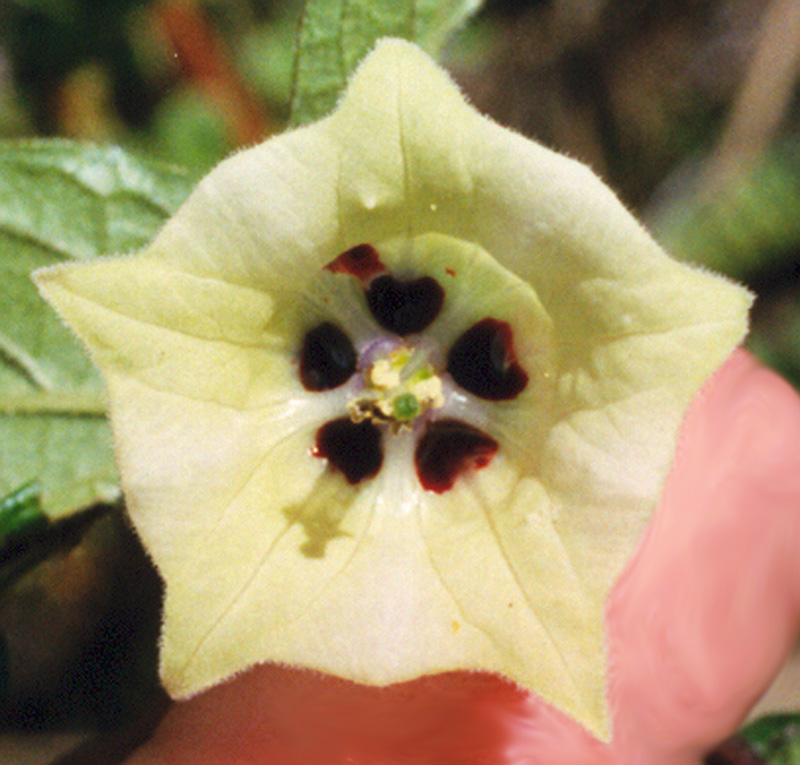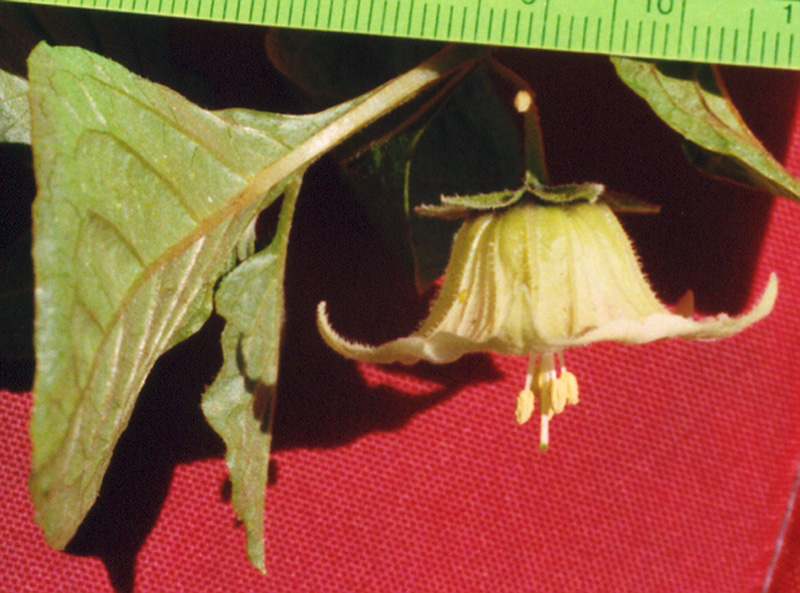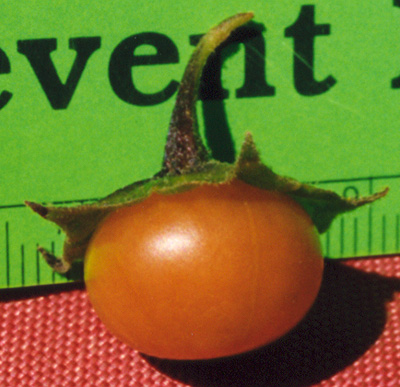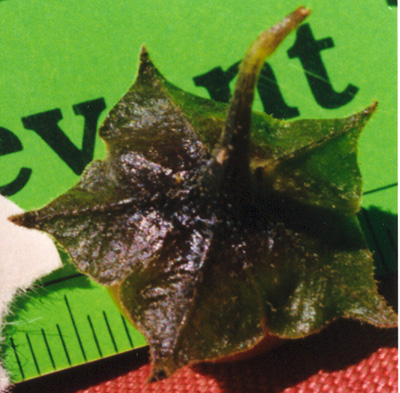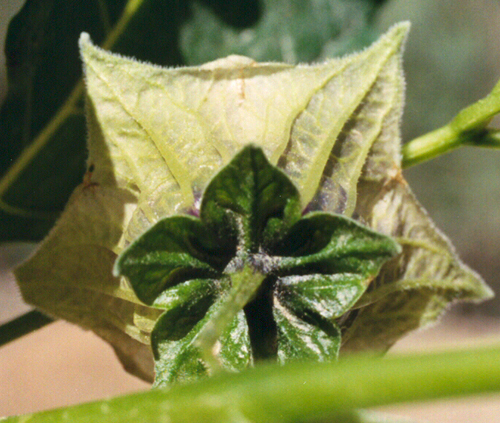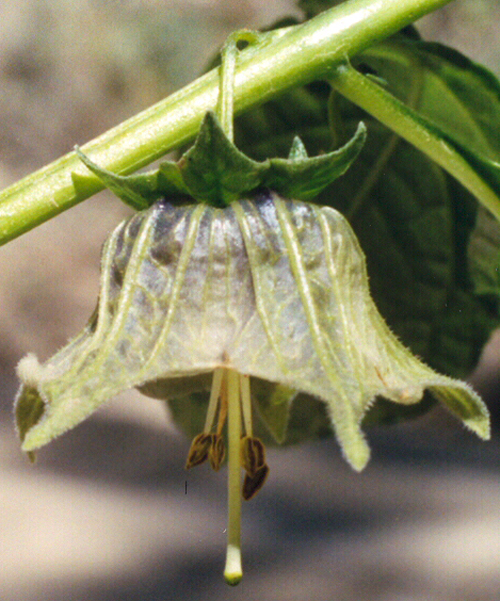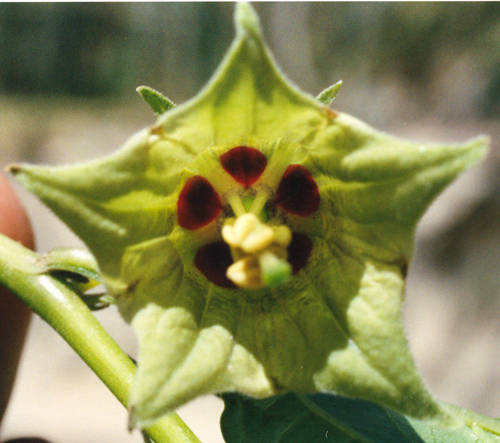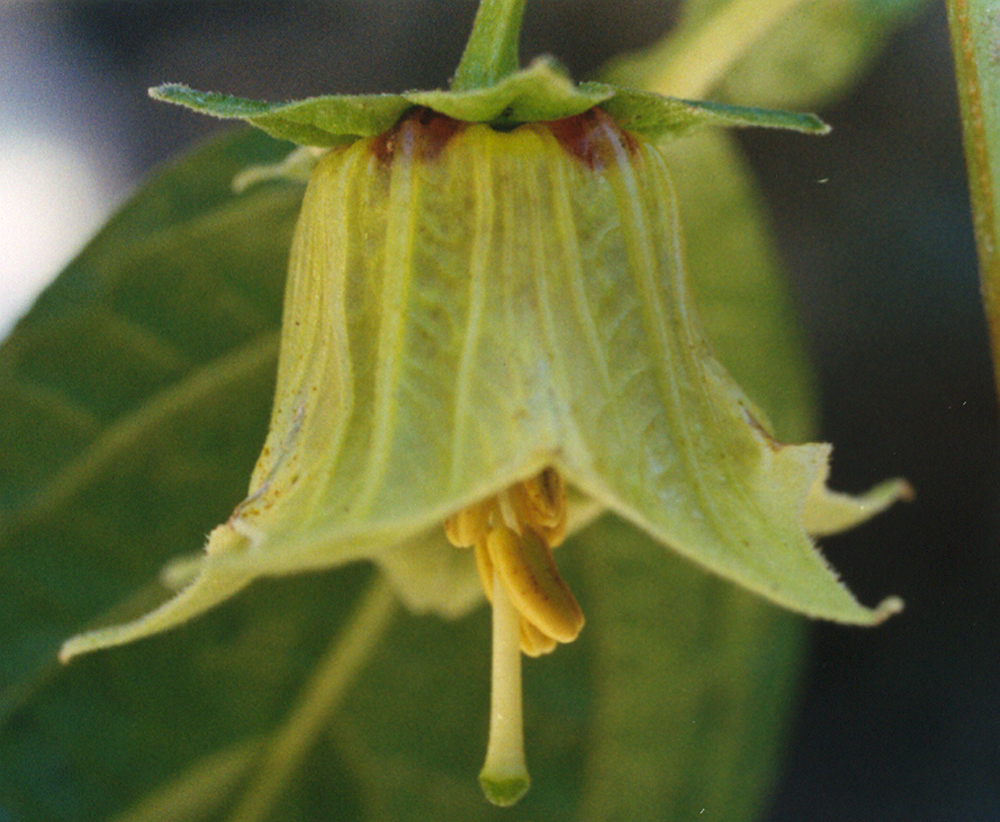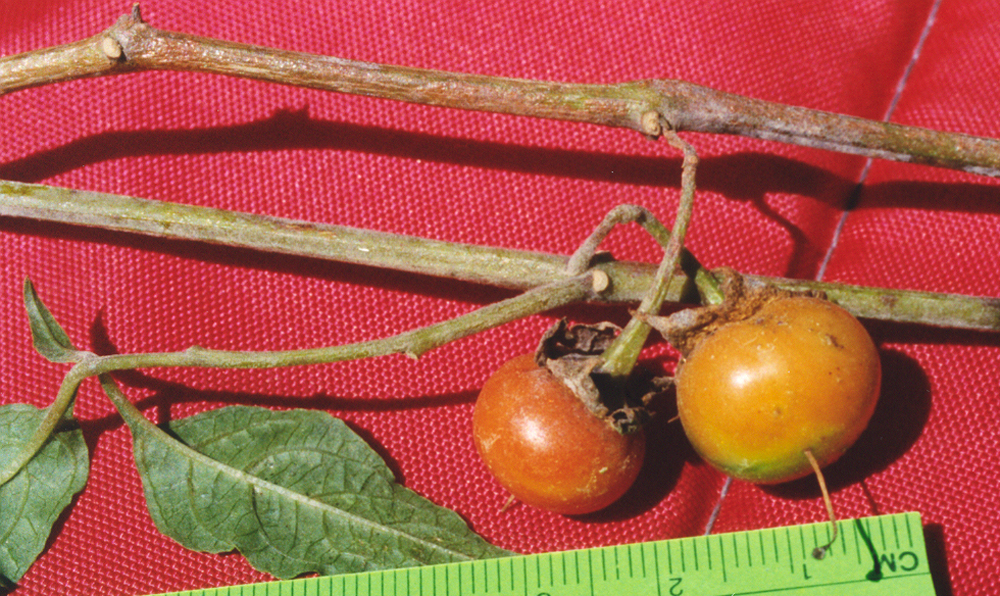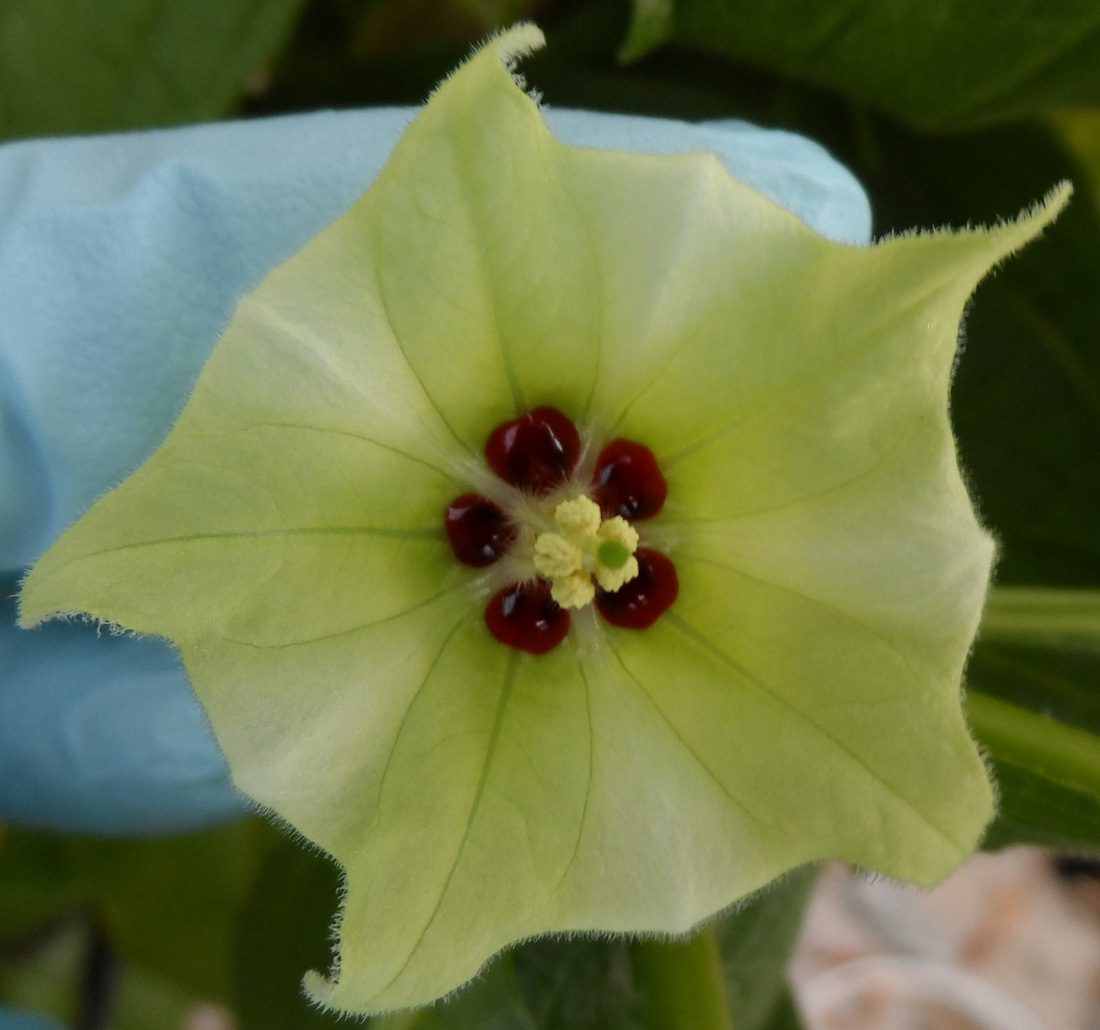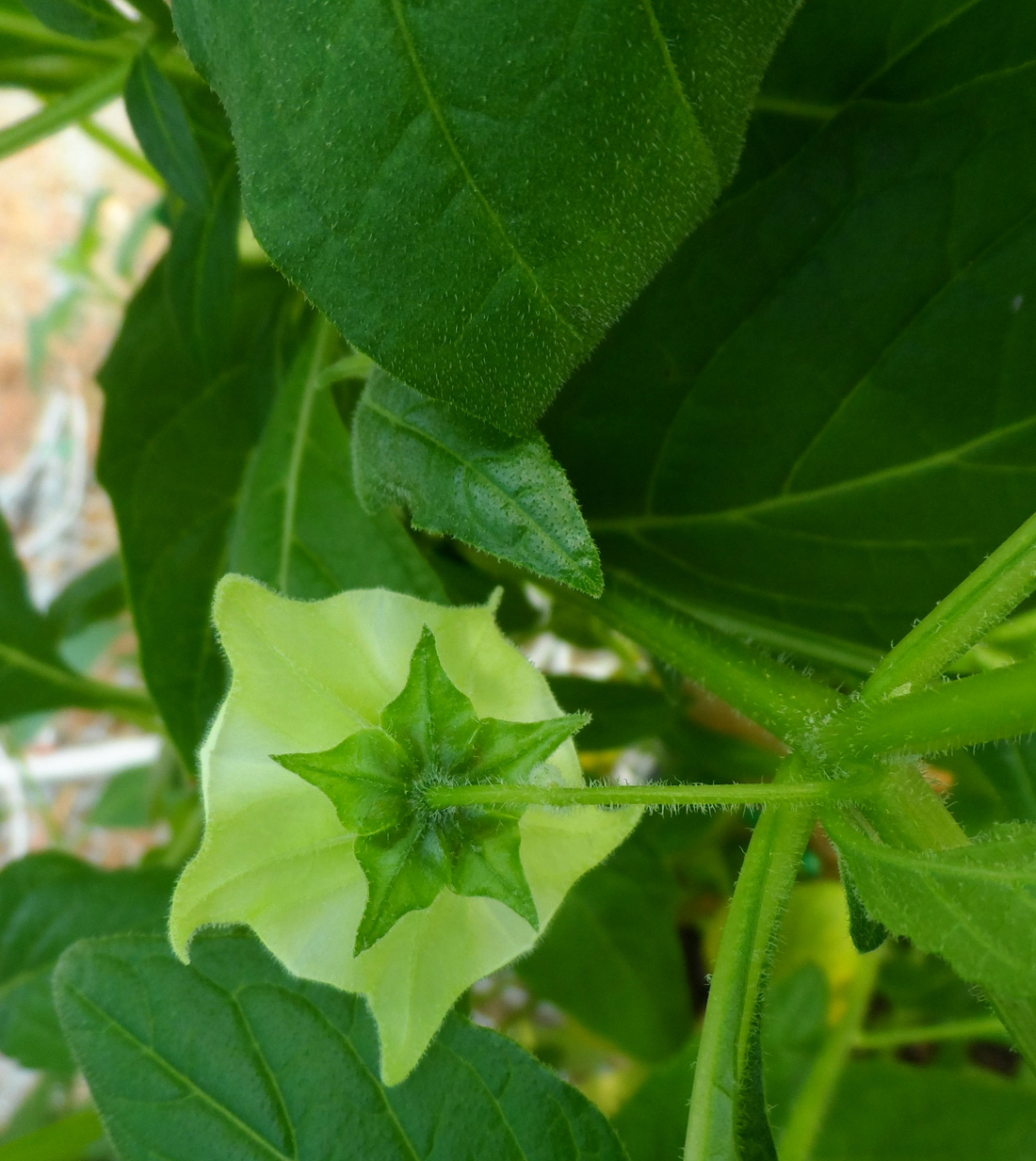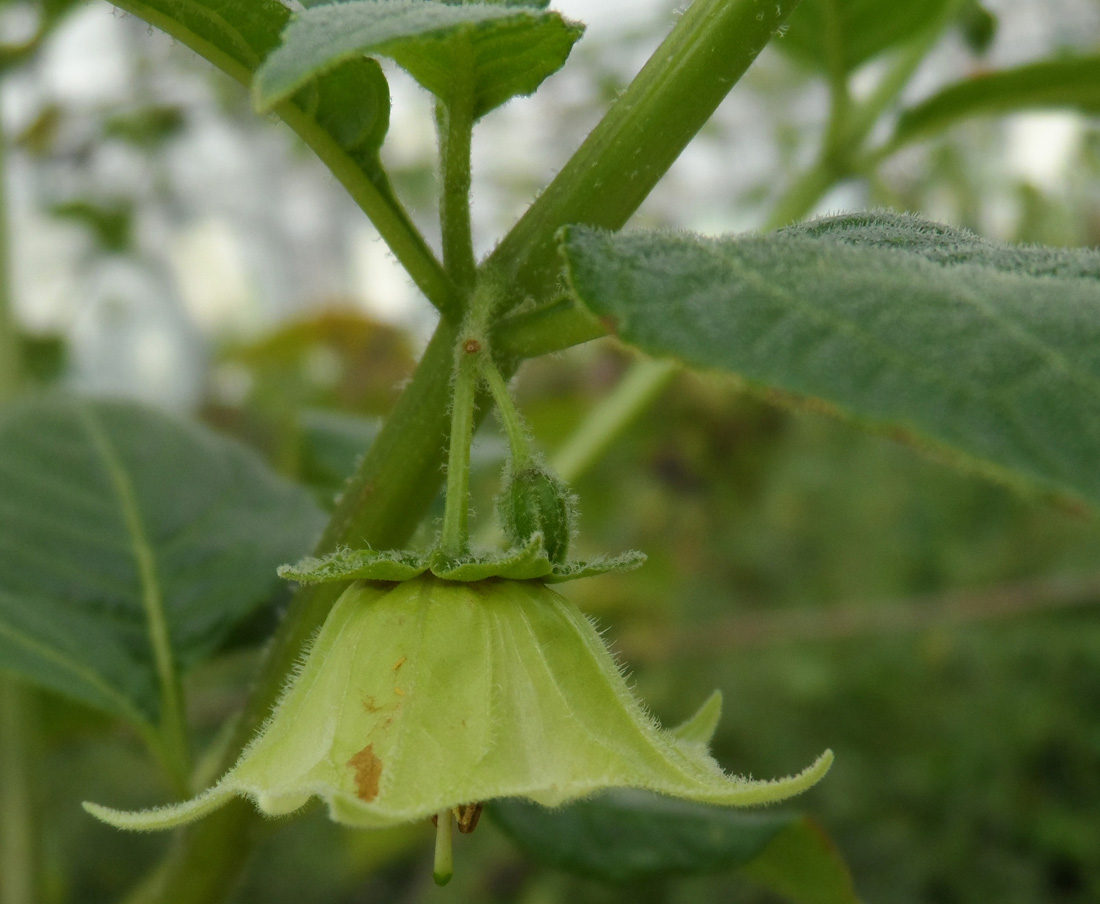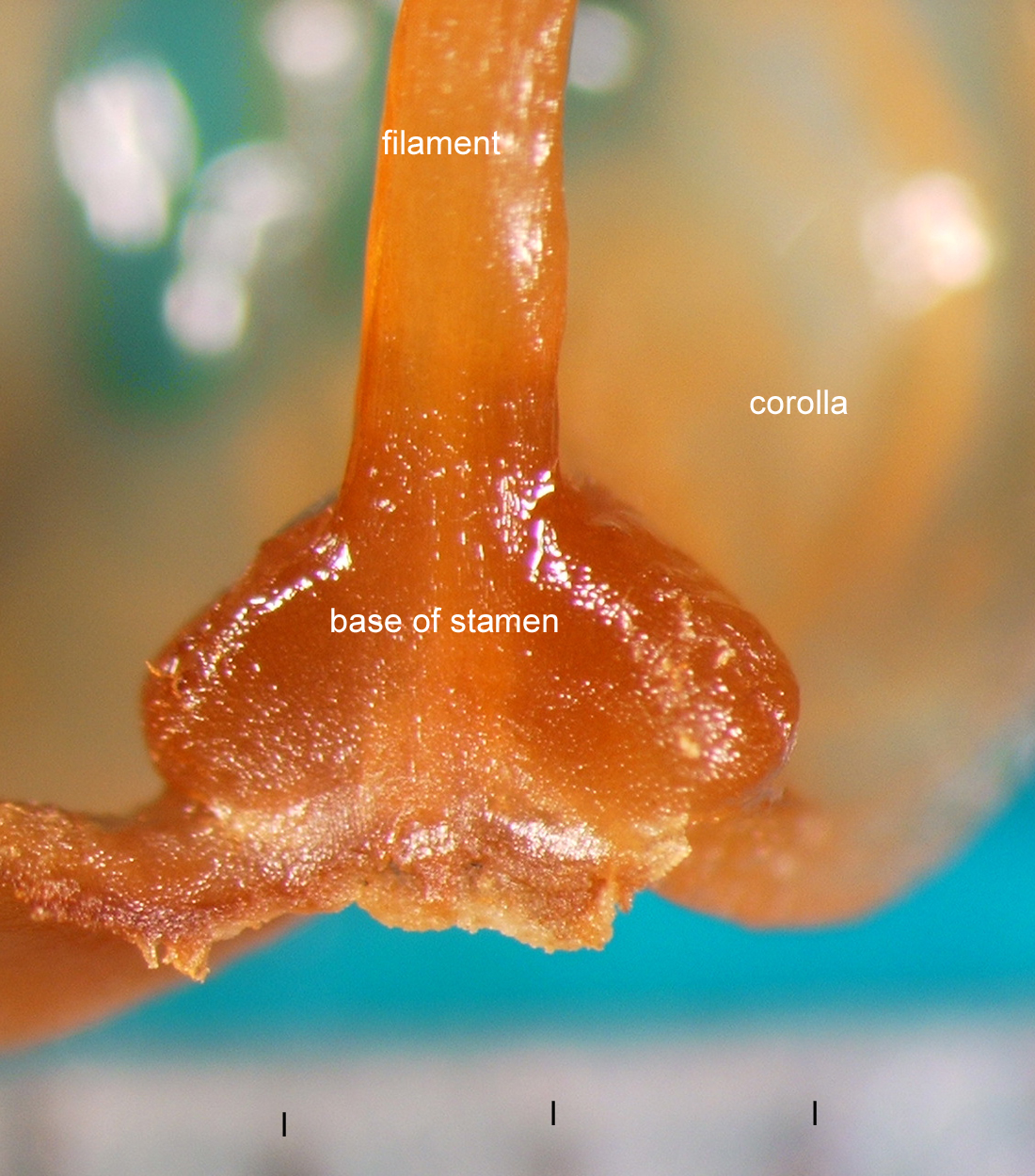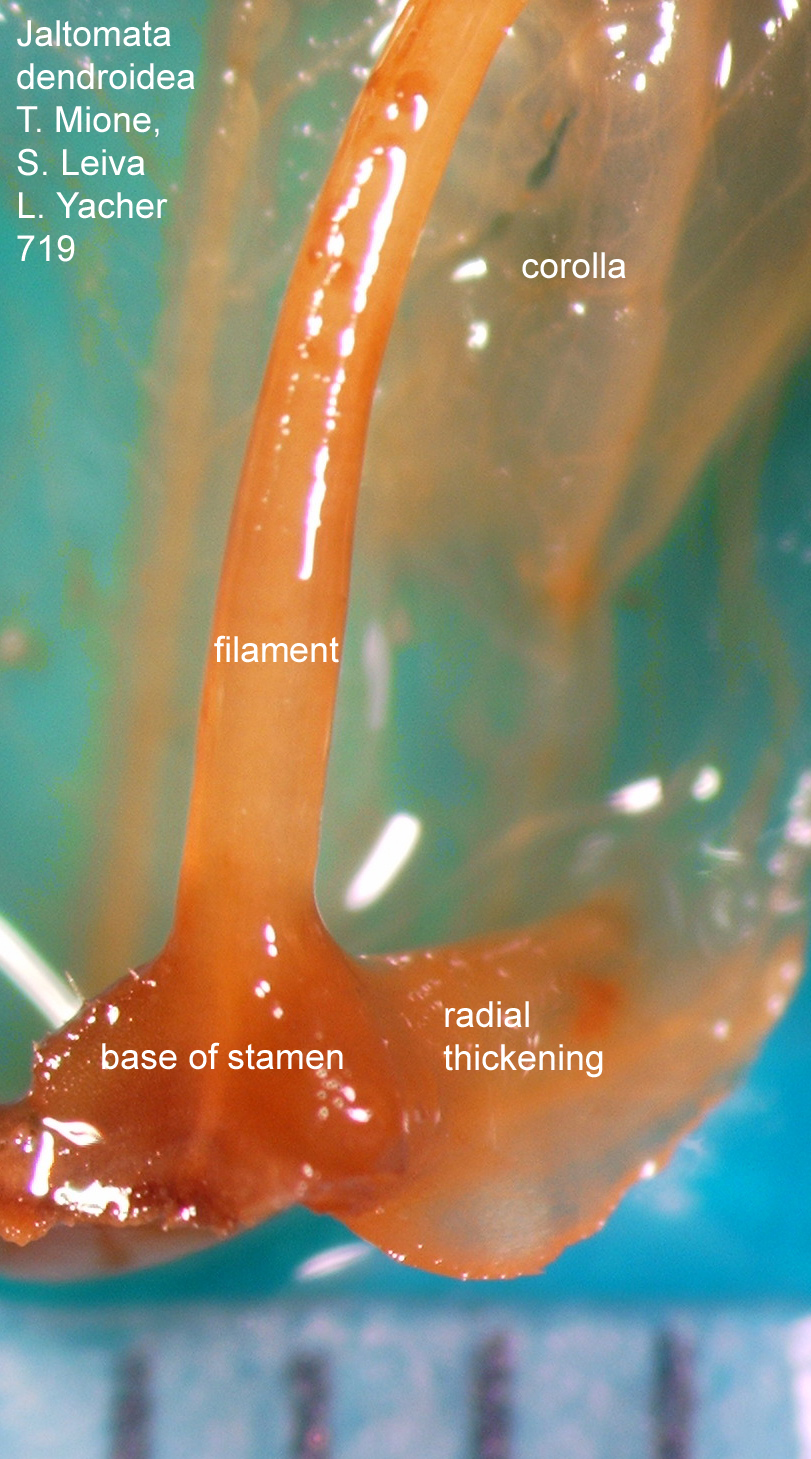In the following description hairs are unpigmented and non-gland-tipped unless indicated otherwise.
| Character |
Description of J. dendroidea |
Description of J. tayabambae |
| Mione collection numbers |
719 |
722 |
Habit & Height |
Woody shrub to 4 m high, growing on / in other vegetation |
Woody shrub to 3 m high, growing on / in other vegetation |
Branches, young |
4 - 5 sided, purple adaxially, green abaxially, without lenticels, covered with dendritic hairs. |
4 - 5 sided, purple adaxially, green abaxially, without lenticels, hollow, glabrous |
older |
cylindrical, brown, with lenticels, glabrous, to 2 -3 cm diameter at base |
cylindrical, brown, hollow, with lenticels, glabrous, to 2.5 -3 cm diameter at base |
Leaves, blade texture & size |
alternate and geminate, membranous,
to 16 cm long |
|
| blade shape including margin |
ovate to ovate-lanceolate |
|
| hairs |
upper side noticably hairy to unaided eye, the hairs all or or predominantly dendritic |
|
| petiole |
semicylindrical, green, glabrescent, covered with dendritic hairs, 1.7 - 3 cm long |
|
Inflorescence |
1 - 3 (-4) flowers based on my observations of pressed specimens made at the time and location of the type collection;
2 according to protologue |
2 |
peduncle |
4-5 sided, green, glabrescent, covered with unpigmented dendritic hairs, 6 - 8 mm long |
glabrescent, 9 - 11 mm long |
pedicel |
5-sided, pale-green proximally, purple distally, covered with dendritic hairs, 15-16 mm long |
figure 7 |
Calyx when flowering, color & size |
green, 17 - 18 mm diam (Figure 12) |
green, 20 - 21 mm diam |
| shape / position during anthesis |
planar (Figure 12) |
flat to reflexed (Figure 6) |
| hairs |
covered with dendritic hairs on the |
|
| at fruit maturity |
23 - 25 mm diameter (Figures 3, 4) |
|
Corolla color |
green (Figure 13) |
green (interior), green-purple (exterior)
Figures 5, 6, 7, 8, 9 |
shape and size |
campanulate, 10-11 mm long (13 - 14 mm in protologue) X 23 - 30 mm diam (fresh flower) (Figure 13) |
campanulate, 11 - 13 mm long
X 22 - 23 mm diam
Figures 5, 6, 7, 8, 9 |
lobes / lobules |
the lobes (5) alternating with small/inconspicuous lobules (5), the lobules very broad relative to length (see photos above and below); lacking lobules in protologue's illustration and description |
5 lobes and no lobules, or the lobes (5) alternating with small/inconspicuous lobules (5), the lobules when present very broad relative to length
Figures 5, 6, 7, 8, 9 |
|
externally, the veins covered with dendtritic hairs |
Figures 6, 7 |
|
Yes, from stamen's base toward sinus/lobule (Figures 1, 15)
|
Yes, from stamen's base toward sinus/lobule
(Figures 5, 8) |
|
no |
no |
Stamen length including anther |
stamens of a flower varying in length,
to 13 mm |
stamens of a flower varying in length,
to 13.1 mm (Figures 7, 8) |
| length stamens exserted beyond distal end of corolla (applicable if corolla is tubular or campanulate) |
5 mm |
4.5 mm (pressed specimen)
8 mm (pickled specimen, at time and place of type collection)
(Figure 7) |
| position of stamens: a) before anthers dehisce, b) after anthers dehisce |
a) connivent; b) nearly connivent: angling away from style only 5 - 10 degrees |
a) connivent; b) nearly connivent: angling away from style only 5 - 10 degrees (Figures 5, 7, 8) |
| base expanded laterally? |
yes |
yes |
| filaments |
whitish, glabrous (at the time and place of the type collection) but flowers of cultivated plants have pubescent filaments (Figure 11) |
pale-green, with purple hairs at base |
| anther color |
yellow |
yellow (Figure 9) |
| anther size |
oblong, 2.5 - 2.8 mm long |
oblong, 3.5 - 3.8 mm long |
| anther mucronate/mucronulate |
no |
yes |
| insertion of filament into anther |
lower ventral face |
lower ventral face |
| anthers of a flower open simultaneously? |
|
|
| pollen grain size |
range 32.5 - 40.25, mean 35.96 um, n = 28 grains in polar view, analine blue in lactophenol, pollen had been stored in 70% ethanol for years
pollen measured by Scott E. Poglitsch, Mione et al. 719 |
|
Gynoecium, stigma |
exserted, green, capitate,
bilobed, 1 - 1.1 mm diameter |
exserted, green, capitate,
(Figures 7, 8) |
Style |
12-12.5 mm long, whitish |
14 - 17 mm |
| Ovary & Ovarian Disk |
ovary green, glabrous, 2.3-2.4 X 3.2-3.3 mm, the disk yellow-orange occupying 40-50% of the height of the ovary |
|
Nectar |
red (Figures 1, 11) |
red (Figures 5, 8) |
| Herkogamy |
yes (Figure 2) |
yes |
| Protogyny |
yes,some of the open flowers encounted at the time of the type collection have undehisced anthers and some dehisced anthers |
yes,some of the open flowers encounted at the time of the type collection have undehisced anthers and some dehisced anthers |
Fruit color (at maturity) and size |
orange, 14 X 19 - 20 mm (Figure 3) |
orange, 11 X 13 mm (Figure10)
|
Seeds per fruit |
217 per fruit from a fruit 14 X 19 - 20 mm.
S. Leiva independently counted (same population) and reported in the protologe 251 - 259 seeds per fruit. |
204 per fruit from a fruit 11 X 13 mm |
Seed Size |
1.5-1.7 X 1.3-1.5 |
|
| Character |
Description of Jaltomata dendroidea |
Description of J. tayabambae |
